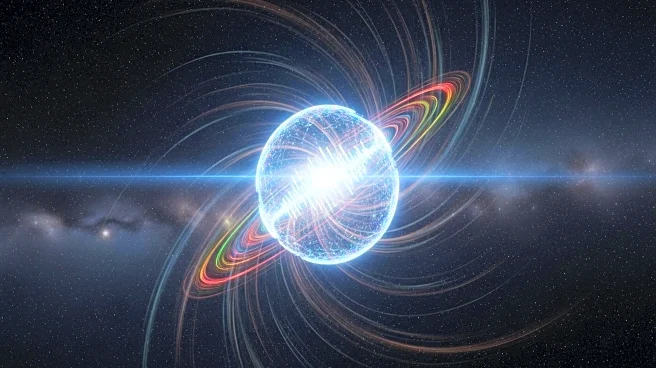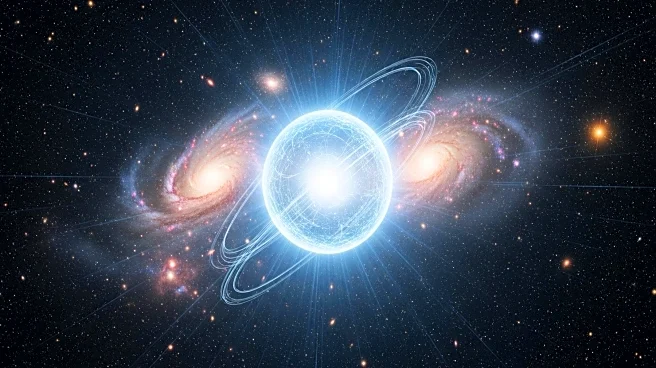What's Happening?
A new study published in the International Journal of Astrobiology proposes that alien life forms might be able to utilize galactic cosmic rays as an energy source. These rays, which are high-energy particles emitted from supernova explosions, could potentially support life on planets and moons lacking a strong magnetosphere and atmosphere, such as Mars, Europa, and Enceladus. The study, led by astrobiologist Dimitra Atri, uses computer simulations to demonstrate how cosmic rays could generate cascades of particles, releasing electrons that microbes could use for energy. This concept expands the potential habitable zones beyond Earth, suggesting that life could exist in environments previously considered inhospitable.
Why It's Important?
The study's findings could significantly impact the search for extraterrestrial life by broadening the criteria for habitable environments. Traditionally, the habitable zone is defined by a star's ability to provide heat and energy for photosynthesis. However, the idea that life could thrive on cosmic rays suggests that icy moons and rogue planets could also support life. This could lead to new exploration strategies and missions targeting these environments. The implications for astrobiology are profound, as it challenges existing paradigms and encourages scientists to consider unconventional energy sources for life.
What's Next?
Future missions to Mars, such as the European Space Agency's Rosalind Franklin rover and China's Tianwen-3 mission, are set to explore beneath the planet's surface to search for biomolecules from potential cosmic-ray-feeding organisms. These missions, launching in 2028, could provide crucial evidence to support the study's hypothesis. If successful, they may redefine our understanding of life's adaptability and resilience, prompting further exploration of other celestial bodies like Europa and Enceladus.
Beyond the Headlines
The study raises ethical and philosophical questions about the nature of life and its adaptability. It challenges the notion that life requires sunlight and a stable environment, suggesting that life could exist in extreme conditions. This could lead to a reevaluation of how we define life and its potential forms, influencing future scientific research and exploration priorities.











